|
Savage Arms Company has for many years
led the market in the manufacture of reliably functioning and
superbly accurate bolt action varmint rifles. As a kid, I would
read every word that I could find in gun magazines about
heavy-barreled, super accurate bolt action rifles that were
built for the sole purpose of varmint hunting. While most
writers back then wrote about hunting in far-away lands for
exotic animals, writers like Bob Milek and Hal
Swiggett wrote of using the Savage Model 12, a purpose-built
bolt action of the highest order, on many types of vermin. I
could relate to that kind of hunting., and absorbed every word
penned by those two men regarding the sport. Since that time, I
have pulled the trigger on many Savage varmint rifles, and have
not once been disappointed in their accuracy.
My main heavy varminter is a Savage
.22-250 VSS that I had a hand in building a couple of
years ago at the Savage factory. It is a wonderfully accurate
varmint gun, and would be ideal to set up in position
overlooking a prairie dog town. However, for carrying over the
hills and hollows of Tennessee, or in the rocky slopes of some
of our western states in pursuit of rock chucks or predators, it
is a mite heavy. That rifle wears a twenty-six inch heavy
barrel, a Choate stock, and weighs in at eleven and
one-third pounds, plus the weight of the scope, mounts, and
bipod. It is a sweetheart to shoot, but a bear to carry around
all day, at least it is for an out-of-shape gun writer that is
pushing fifty years old. Okay, I’ll admit that I could carry
the VSS all day if necessary, but I am always looking for a good
reason to add another rifle to the battery, and that brings us
to the subject of this piece; the new Savage Model 25.
The Model 25 is a derivative of Savage’s
excellent little Model 40,
which is chambered for the .22 Hornet. While the outward
appearance of the Models 40 and 25 are very similar, the new
Model 25 has a three-lug bolt with the locking lugs at the
front, has a detachable four-round magazine, and is chambered
for the more powerful .204 Ruger and .223 Remington
cartridges, with the rifle reviewed here being the latter. The
Model 40 is chambered for the .22 Hornet only, and has a single
shot action with the locking lugs amidships of the bolt, similar
to many rimfire actions. While that bolt arrangement is plenty
strong for the Hornet, Savage engineers wanted a front-locker
for the higher pressure cartridges, and thus the Model 25 was
born. I am also glad that Savage chose to add a magazine to the
design. At the bench, a single shot is just fine, but in the
field, I prefer to not have to fumble with dropping a cartridge
into the receiver port of a varmint rifle. The Model 25 magazine
is detachable, made from a heavy-duty plastic, and is very easy
to load. Even with the changes, the Model 25 is still a handy
little rifle, with the sample gun weighing in at eight pounds,
two ounces unloaded and unscoped. By comparison, my Model 12 VSS
weighs over eleven pounds empty.
The three-lug bolt design makes for a nice, low
sixty degree bolt lift, keeping the knuckles from hitting a
low-mounted scope. The action cocks upon opening, and is very
smooth to operate. Bolt travel is just three and one-eighth
inches, and the trim receiver is perfectly scaled to fit the
.223 cartridge. The safety is both easy and quiet to operate,
pushing forward about three-quarters of an inch to the
“fire” position. It works better for a right-handed shooter,
but was also easy enough for a left-hander like me to
manipulate. The safety blocks the sear, is a two-position type,
and does not lock the bolt, allowing the safe working of the
bolt with the safety engaged. The stock is made of laminated
wood, with a Monte Carlo cheek piece and a beavertail forend,
which has two swivel studs attached to mount both a sling and
bipod. Another sling swivel stud is located two inches forward
of the toe of the buttstock, and the butt is capped with a
well-fitted synthetic rubber recoil pad. The trigger guard and
magazine well is of a one-piece design, and is made of a matte
black plastic. The barrel and receiver are a highly polished
deep blue-black. The twenty-four inch barrel is of a
medium-heavy profile, measuring .6925 at the muzzle, which wears
a recessed target crown. The barrel is fluted for about half its
length, and is free-floated its entire length, and sleeved into
the front of the receiver a full two inches for excellent barrel
support. The barreled action is bolted to the laminated stock in
three places, and is rock-solid stable, with no movement between
the stock and action. One of the best features of the Model 25
is of course, that wonderful AccuTrigger.
The AccuTrigger has been around for several years now, and
Savage puts it on all its bolt action rifles. It is a reliable,
safe, easy to use trigger, and is now being copied by other
rifle makers. A good trigger can make or break a great varmint
gun, and the AccuTrigger is one of the best on the market. It is
easily adjustable by the rifle’s owner, and the trigger pull
on the test rifle measured barely over two and one-half pounds
at its lowest setting. In case I have been too vague up to this
point, I love the AccuTrigger. It helps me to shoot better.
Savage ships the Model 25 with Weaver
style bases already attached, which is a nice touch, especially
on a rifle in this price range. For shooting the little Model
25, I gathered a variety of factory and handloaded ammunition,
and mounted a Leupold VX-III 6.5 to 20 power scope in low
Warne quick detach rings. The rings clamped solidly to
the bases atop the Savage action, and held the Leupold scope
down as low as possible to the rifle. Combined with the
excellent design of the stock’s cheek piece, a good cheek weld
places my left eye directly in line with the scope, exactly as I
like it to be. This Leupold has proven itself on other rifles in
the past, and I chose it because I trust it. The optics are
clear, and the adjustments precise. No rifle can shoot better
than its sights, and I wanted to see just how well this Model 25
could shoot. I fired the Model 25 for accuracy at a distance of
100 yards, on a forty degree day with a slight gusty breeze. My
shooting range is in a hollow between two ridges, and the wind
has little effect on group sizes, unless it is really howling. I
started off shooting the Black Hills and Winchester
factory ammunition, and it performed well, with even the largest
group fired measuring an acceptable one and one-quarter inches.
That is not too bad for a factory rifle shooting factory
ammunition, but this rifle is a Savage, and I wanted to see how
it would shoot my favorite varmint bullet, the Barnes 36
grain Varmint Grenade. I also tried a few of my Barnes 50
grain VLC coated bullets, which I love, but that bullet has been
discontinued. Anyway, the velocity and accuracy results are
listed in the chart below. Velocities are listed in
feet-per-second (fps), and were recorded using a PACT
Professional chronograph, set up at ten feet from the muzzle
of the rifle. Accuracy is listed in inches and fractions
thereof, and are for three consecutive shots at 100 yards.
Bullet weights are listed in grains. JSP is jacketed softpoint.
V-Max is a load using the Hornady V-Max plastic-tipped
bullet. HP is a match hollowpoint. VLC is the Barnes coated
bullet. VG is the Barnes Varmint Grenade bullet. FMJ is a full
metal jacket bullet.
| Ammunition |
Bullet Weight |
Velocity |
Group Size |
| Black Hills JSP |
55 |
3036.5 |
1.125 |
| Black Hills JSP |
60 |
2935 |
0.812 |
| Black Hills V-Max |
60 |
3050.5 |
1.25 |
| Black Hills Match HP |
68 |
2815.5 |
0.825 |
| Winchester |
62 |
3039.3 |
0.375 |
| Handload VLC |
50 |
3203.4 |
0.500 |
| Handload VLC |
50 |
3033 |
1.137 |
| Handload VG |
36 |
3763.3 |
0.187 |
I was genuinely surprised at how accurate that
Winchester load was out of this rifle. It is not promoted as a
match grade load, and is the relatively inexpensive white-box
stuff. It shot into just three-eighths of an inch, and was
repeatable. This just goes to prove that rifles are individuals,
and this Winchester load proved more accurate in this Model 25
than it has in other rifles. I was elated at the accuracy
displayed with my favorite Barnes Varmint Grenade load. This
Savage would put them into tiny little one-hole groups
repeatedly. The best group fired with this rifle, and I believe
with any rifle that I have ever fired, measured just
three-sixteenths of an inch! Now I know that a couple hundred of
you are going to email wanting that load recipe, so I will list
it here. Keep in mind that your results may vary, but this is a
smoking load on small vermin, is accurate, and safe in every
rifle in which I have tried it. You, however, are cautioned to
start with a powder charge ten percent below that listed here,
as I am not a certified ballistic laboratory. I am just a
shooter, so use due caution. If you hurt yourself or your rifle,
I am not going to buy you a new gun nor raise your children.
When I try this load in a new rifle, I always start lower and
work back up. You should do the same. The load uses Remington
cases, Remington number 7 ½ Benchrest primers, and 27.4 grains
of H-322 powder. Adjust overall length to suit your
particular rifle, but I always want at least one caliber of
bullet shank in the case neck for proper alignment and tension.
I like the new Model 25 Savage. It is scaled to
better suit the smaller varmint cartridges like the .223
Remington. It is much handier and less expensive than the
comparable rifle in the Model 12 line; the 12 Varminter Low
Profile. While the 12 is a fine rifle, you will save about two
pounds of weight and $350 by going with the Model 25 instead.
The best part is, you still get the AccuTrigger, a high-polish
blued finish, a laminated stock, and are giving up nothing in
accuracy. That 350 bucks will go a long way towards the purchase
of a quality scope, and the lighter weight makes the gun handle
more like your favorite deer rifle than an artillery piece. I am
glad to see the Model 25 added to the Savage lineup. I like
rifles that are scaled to the size of the cartridge, and I
really love rifles that are as accurate as this Model 25, and
still priced way below the competition. As a side note, when you
get into the realm of affordable rifles that will shoot one-hole
groups, the Model 25 has very little competition, if any.
Check out the Model 25 and other Savage products
online at www.savagearms.com.
Look at the line of quality Leupold optics at
www.leupold.com.
To order the Barnes Varmint grenade bullets, go
to www.barnesbullets.com.
For the location of a Savage dealer near you,
click on the DEALER FINDER icon at www.lipseys.com.
To order the Model 25 online, go to www.galleryofguns.com.
As of this writing, these rifles are just
starting to ship to dealers, so finding one might take some
searching, but it is definitely worth the effort.
Jeff Quinn
| For a list of dealers where you can
buy this gun, go to: |
|
To buy this gun online, go to: |
 |
|

|
|




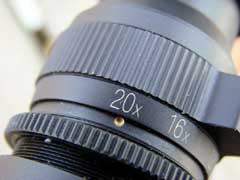
Leupold VX-III 6.5-20x scope.

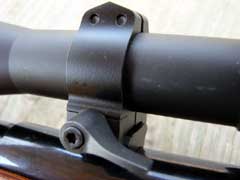
Warne quick-release scope rings.


Black Hills .223 ammunition.


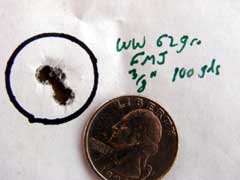
The Model 25 proved to be capable of jaw-dropping
accuracy, as shown by these 100-yard benchrest groups
using two handloads and Winchester's 62-grain factory
load.
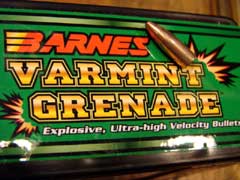

Barnes' Varmint Grenade bullets proved most
accurate in Jeff's Model 25.
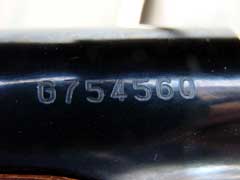
|
NOTE: All load data posted on this
web site are for educational purposes only. Neither the author nor
GunBlast.com assume any responsibility for the use or misuse of this data.
The data indicated were arrived at using specialized equipment under
conditions not necessarily comparable to those encountered by the
potential user of this data. Always use data from respected loading
manuals and begin working up loads at least 10% below the loads indicated
in the source manual.
  
Got something to say about this article? Want to agree (or
disagree) with it? Click the following link to go to the GUNBlast Feedback Page.
|
|
Click pictures for a larger version.


Savage Model 25 .223 Caliber Lightweight Varminter
Bolt-Action Rifle.




Savage's extraordinary AccuTrigger.



Receiver is bolted to the stock using three bolts.

One-piece plastic trigger guard and floorplate.
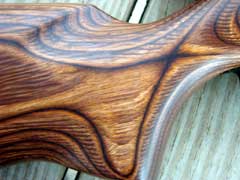




Dual swivel studs on forearm allow attachment of sling
and bipod.


Magazine release (top) and four-shot detachable magazine
(bottom).

Safety is located behind the bolt handle.



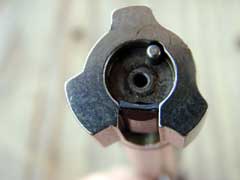
Jeweled bolt has a three-lug bolt head and 60-degree
lift.


Barrel is free-floated and sleeved to the receiver.


Beautifully polished, fluted, medium-heavy barrel.
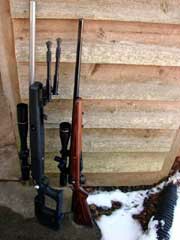

The Model 25 is dwarfed by the author's Savage 12VSS
heavy varminter.

|
![]()